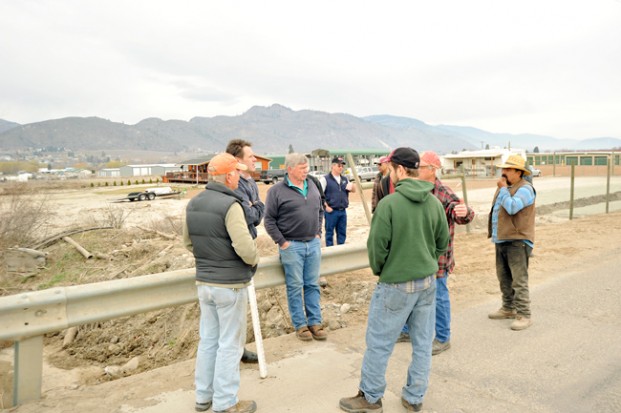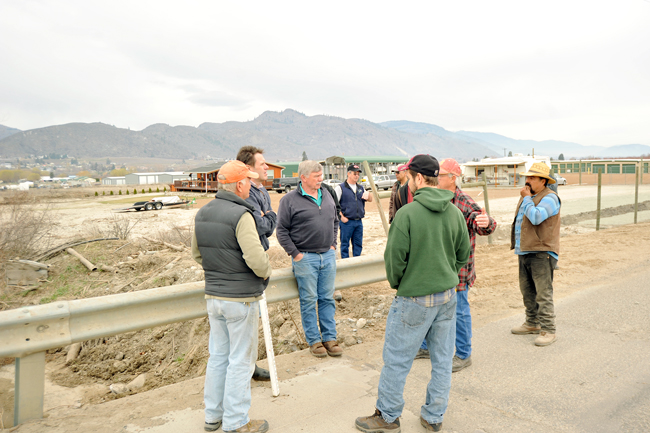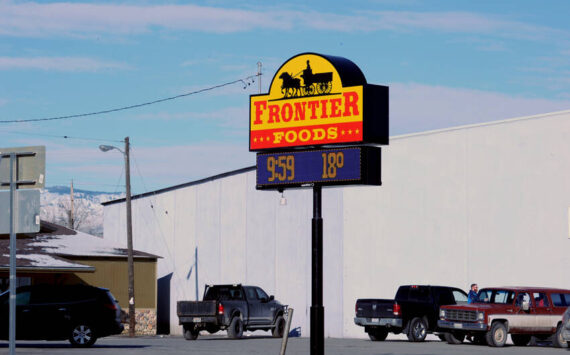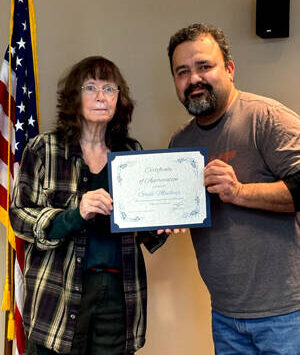“If you dig down about three feet you are down to the glacial till. When you get an event like we had it just washes all the top soil away and exposes the glacial till,” said Jeff Bunnell, owner of Oroville Mini Storage.
Want to do work in Tonasket Creek bed to lessen property damage

OROVILLE – After last month’s flooding of Tonasket Creek, several area property owners are trying to find out just what they can do to prevent future damage to their orchards and businesses.
Jeff Bunnell, who owns Oroville Mini Storage, got together with like-minded people, as well as agency representatives to discuss the matter. They met on East Oroville Road, near where a small bridge crosses over the creek. Those who suffered property damage wanted to know if they could deepen and widen the creek bed, as well as building higher berms along the sides to try and contain any future flooding events.
“If you dig down about three feet you are down to the glacial till. When you get an event like we had it just washes all the top soil away and exposes the glacial till,” said Bunnell.
On the west side of East Lake Road the group could see the Bunnell property where much of that topsoil was laid out where his wife’s garden used to be. He said he had already dug down more than a foot before he hit where the garden was. It took, he said more than an hour, just to expose even a small portion of his lot that borders the creek.
Rod Noel, Oroville’s superintendent of public works said, “The start of where the creek actually left its banks is above the second (Molson) grade. This is a bad spot down here, the actual streamline is way above this area.
“With the velocity of the water, no matter what, it’s going to eat away at the bank.”
Bunnell pointed out that the bridges, the one where the group was gathered, and another on Sawtell Road, act a choke points as they fill with debris underneath.
“We have a lot of trouble with bridge debris as it stops the flow and the water goes over the sides,” agreed Noel.
Although the vast majority of the damage occurred outside of the city limits, Oroville’s Bud Clark Ballfields along the Chesaw Road were covered with material washed up in the flood.
“It took out fences, my wife’s garden… we were just lucky we have the berm which protected the storage units,” said Bunnell, who adds he experienced similar property damage two years ago and five years ago.
“You get a huge amount of water at times, but most of the time it is bone dry,” said Noel.
Chris Fisher, a fisheries biologist with the Colville Fish and Wildlife Department, took measurements in the creek bed below the bridge. He said while the creek had water year around further up the creek, the stretch in question, only had water in the spring. The water was important, however to allow adult fish to reach spawning grounds and juvenile fish to leave them. He indicated that his agency would not be adverse to work being done during the dry period to improve the habitat and help prevent or lessen future flooding events.
“Down here it not a much of a fish issue, further up yes – we have some tagged fish that show they leave the stream this way,” Fisher said. “For this reach it is for access in and out in the spring.”
Fisher called it access to some limited, but quality habitat, but said there were no plans to return it to historic levels where water flowed year around. He added that it would be the land owners responsibility to try and get the permits required from the state Department of Ecology to work in the stream bed.
“Do we all agree that something needs to be done?,” Bunnell asked his fellow property owners. “If not it is just going to happen again.”
After getting agreement all around, he asked, “What if we got a consortium permit that would allow all the landowners to work in the stream?”
Fisher replied, “We wouldn’t be opposed to making a conveince.”
The fish biologist said the landowners should begin by starting the HPA process with state Fish and Wildlife.
Bunnell said he would work on organizing a meeting between the landowners and the various agencies from the Colville Tribes, county and state – like Fish and Wildlife and the Department of Ecology.
“If you dig down about three feet you are down to the glacial till. When you get an event like we had it just washes all the top soil away and exposes the glacial till,” said Bunnell.







